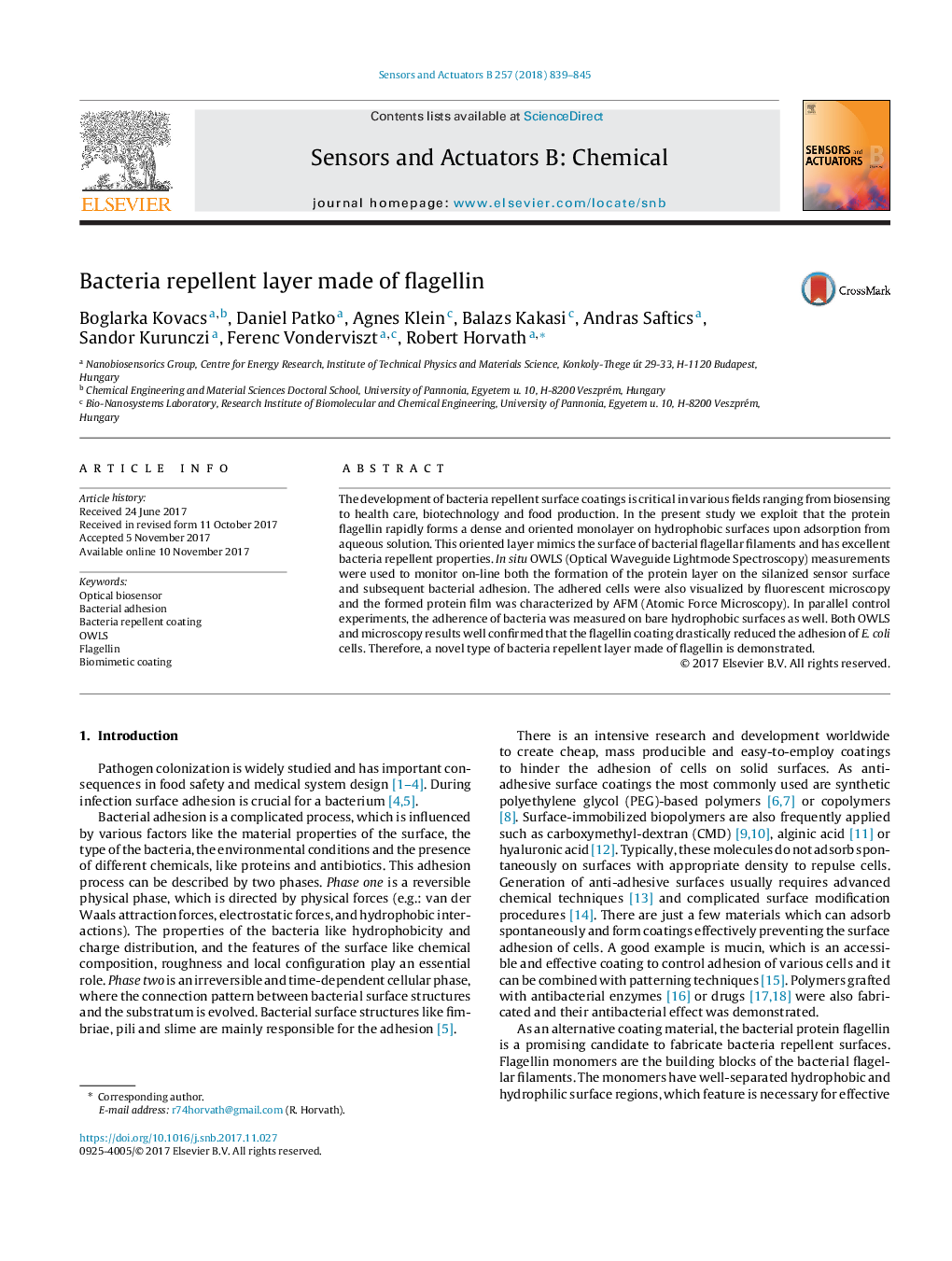| Article ID | Journal | Published Year | Pages | File Type |
|---|---|---|---|---|
| 7141638 | Sensors and Actuators B: Chemical | 2018 | 7 Pages |
Abstract
The development of bacteria repellent surface coatings is critical in various fields ranging from biosensing to health care, biotechnology and food production. In the present study we exploit that the protein flagellin rapidly forms a dense and oriented monolayer on hydrophobic surfaces upon adsorption from aqueous solution. This oriented layer mimics the surface of bacterial flagellar filaments and has excellent bacteria repellent properties. In situ OWLS (Optical Waveguide Lightmode Spectroscopy) measurements were used to monitor on-line both the formation of the protein layer on the silanized sensor surface and subsequent bacterial adhesion. The adhered cells were also visualized by fluorescent microscopy and the formed protein film was characterized by AFM (Atomic Force Microscopy). In parallel control experiments, the adherence of bacteria was measured on bare hydrophobic surfaces as well. Both OWLS and microscopy results well confirmed that the flagellin coating drastically reduced the adhesion of E. coli cells. Therefore, a novel type of bacteria repellent layer made of flagellin is demonstrated.
Related Topics
Physical Sciences and Engineering
Chemistry
Analytical Chemistry
Authors
Boglarka Kovacs, Daniel Patko, Agnes Klein, Balazs Kakasi, Andras Saftics, Sandor Kurunczi, Ferenc Vonderviszt, Robert Horvath,
